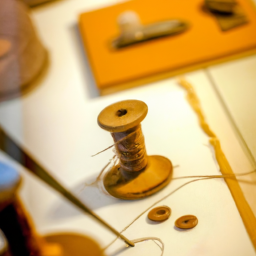
History of Sewing Needles
Sewing needles have been an essential tool in human civilization for thousands of years. They have played a crucial role in the development of clothing, textile arts, and the overall progress of our society. Let’s dive into the fascinating history of sewing needles.
Ancient Origins
The origin of sewing needles dates back to the Paleolithic period. The earliest known sewing needles were made from bones, antlers, or ivory. These rudimentary needles served as essential tools for early humans in stitching hides together to create clothing, tents, and other necessities for survival.
The Bronze Age and Iron Age
During the Bronze Age, around 3000 BCE, needles began to be crafted from more durable materials, such as copper and bronze. The eye of the needle, which allows the thread to pass through, also made its appearance during this era. However, these needles were still handcrafted and time-consuming to produce.
In the subsequent Iron Age, from approximately 1200 BCE, needles made of iron began to emerge. The discovery of iron greatly improved the strength and durability of needles, revolutionizing sewing techniques. The production process became more efficient, enabling the mass production of needles.
Medieval Times
Throughout the medieval period, needles continued to evolve. The art of needle-making was often an exclusive craft passed down through generations. The needles were hand-forged by blacksmiths, sharpened to a fine point, and featured an eye at one end.
During this time, embroidery and ornate needlework became highly valued, leading to the creation of specialized needles for different purposes. Some needles were encrusted with precious stones, reflecting their growing importance in fashion and decorative arts.
Industrial Revolution and Modern Times
The Industrial Revolution in the 18th century brought significant advancements in needle production. Manufacturing techniques utilizing machinery were introduced, resulting in mass-produced needles made from steel. The automation of the production process made needles more affordable and accessible to a wider population.
In the modern era, sewing needles have continued to evolve with the introduction of new materials and technologies. Needles made from stainless steel, titanium-coated alloys, and even specialized synthetic materials are available, catering to different fabric types and sewing techniques.
Conclusion
The history of sewing needles is a testament to the ingenuity and resourcefulness of humankind. From humble beginnings with bone needles to the advanced and specialized needles of today, these tools have played an integral role in the progress of civilization and the development of numerous textile arts.
Next time you thread a needle, take a moment to appreciate the deep-rooted history and craftsmanship behind this humble instrument.




